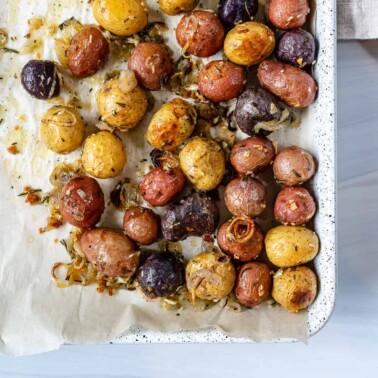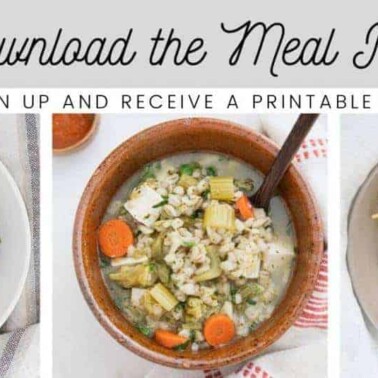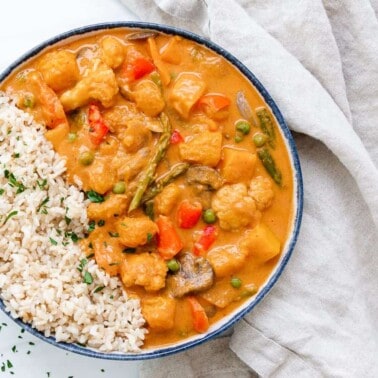As an Amazon Associate I earn from qualifying purchases.
The ultimate beginners guide to carrots; the various types, how to store carrots, prepare, slice, cook, and freeze them! This low-budget humble ingredient is a perfect addition to your plant-based, low-budget kitchen!
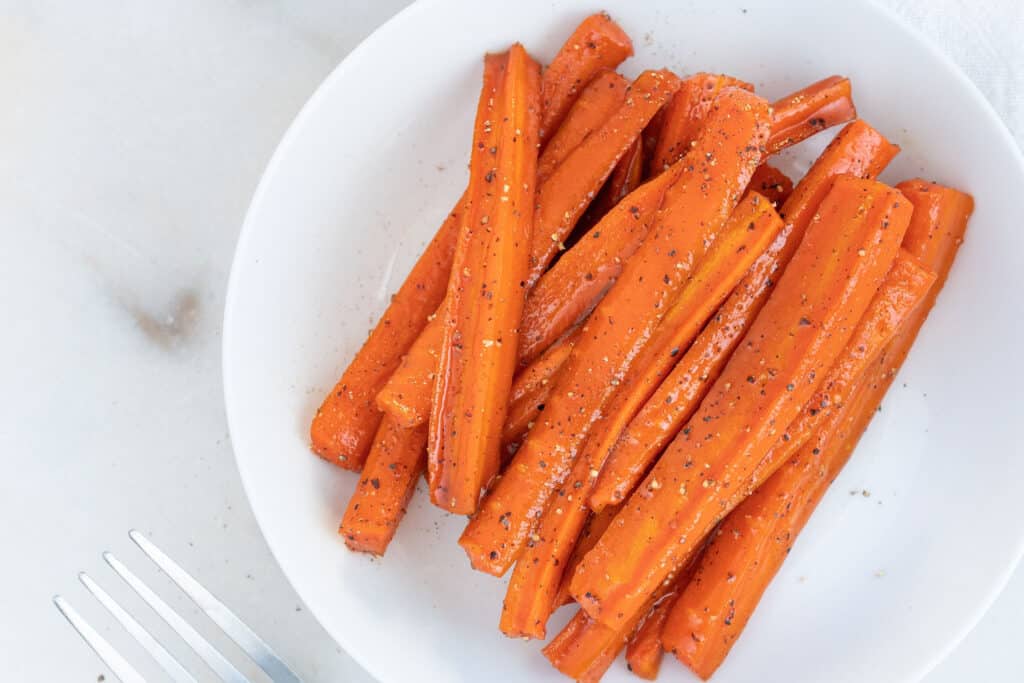
A Complete Guide to Carrots (Preparing, Storing, Using)
When it comes to eating plant-based on a budget, there are several staple ingredients that we love to keep on hand at all times. Along with pulses like lentils and beans and several grains, there are cheap and nutritious vegetables like celery, potatoes, and the humble carrot!
Not only is this simple root vegetable (‘Daucus Carota) a great addition to any low-budget household, but they’re packed with various health benefits and can even be stored for several months (if stored properly!). Plus, if you grow your own (or source carrots with the tops), you can even use the stems and leaves in other recipes!
Best of all, though, this ingredient is tasty too. When enjoyed raw, carrots are crunchy and slightly sweet. When cooked, they become wonderfully tender. Plus, with cooking options including steaming, boiling, frying, roasting, and more – you’re unlikely to run out of new ways to enjoy this root vegetable any time soon. You can even enjoy this ingredient dried and made into chips or powder.
For more cooking 101 guides, you might also like this guide to tofu, zucchini, avocado, quinoa, lentils and brown rice.
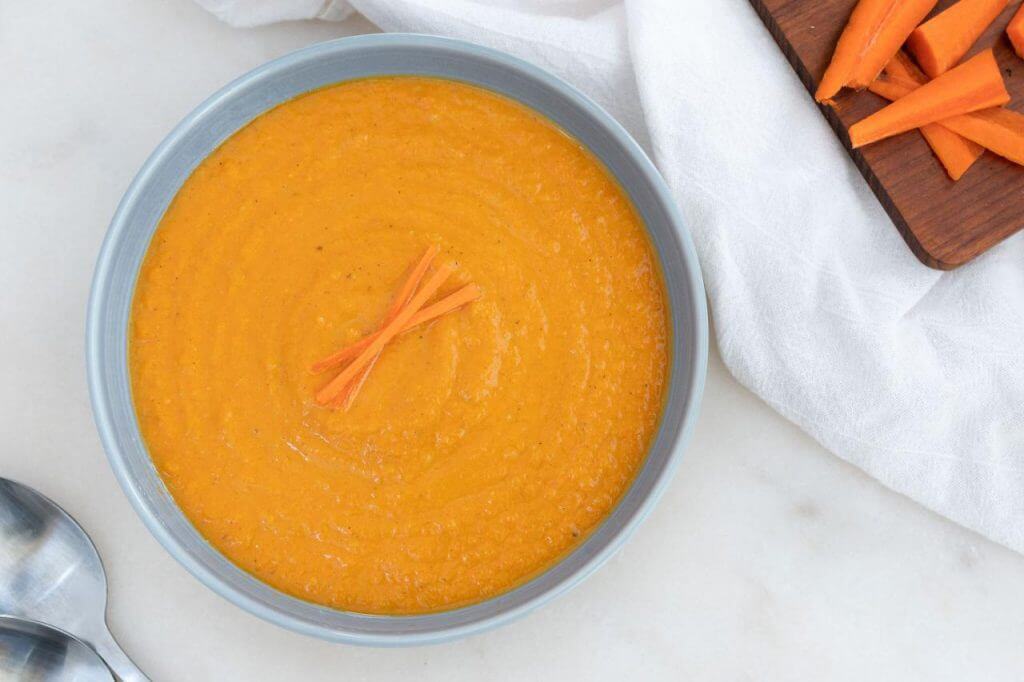
The Types of Carrots
While the carrots you’ll find in grocery stores are typically orange, there are varieties: yellow, red, purple, black, and even white, with multiple cultivars within. However, there are two broad types of carrots: ‘eastern carrots’ and ‘western carrots.’
While the Eastern carrots include purple, red, and black varieties, Western carrots are what we know as the common carrot and are orange (or yellow/white), with four main types (classified by their root shape). These types include:
- Imperator Carrots: This is a ‘classic’ orange carrot – long, straight, and with a tapered end (usually between 8-11 inches).
- Nantes Carrots: These have more sparse foliage than imperator and a rounded end. They are also higher in sugar and have a lower shelf life. There are several cultivars.
- Chantenay Carrots: These contain strong foliage but are much shorter than other carrot types with a tapered yet rounded tip.
- Danvers carrots: An heirloom medium-sized carrot developed in the late 19th century; these carrots have strong foliage with a ‘conical’ shape.
AND
- Baby carrots (or ‘mini carrots’): are simply carrots that have been harvested before reaching maturity, so they are much smaller than regular carrots (usually just 1-3 inches long). These differ from ‘baby-cut’ carrots, which are carrots that have been cut into smaller pieces.
Exotic Carrots
As previously mentioned, there are several carrot color variations, including carrots with names including ‘purple dragon,’ ‘kaleidoscope,’ and ‘deep purple hybrid’. The color of the carrot impacts the exact nutrition and plant compound composition within.
In terms of flavor, the various carrot types are similar – with slight differences. Whereas orange (and red) carrots are earthy and sweet, purple carrots are sweet with a hint of peppery flavor, and yellow carrots have a milder flavor, with very little earthiness. Here is a guide to the most popular carrots for planting.
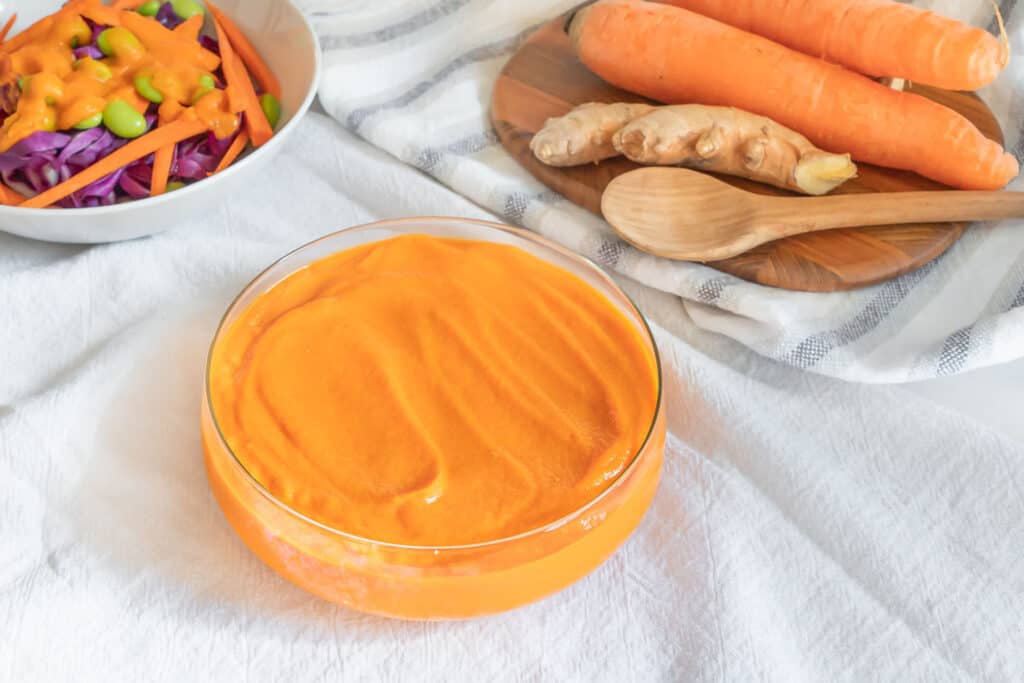
Health Benefits of Carrots
Carrots have several well-reported health benefits, including:
- Carrots are practically fat-free: In fact, they’re made up of between 85-95% water, with around 10% carbs with very little fat and protein. In 100g raw carrots, there is approximately 0.2g of fat.
- Fairly low GI: The GI rating for carrots differs on the preparation method, with raw carrots being the lowest, cooked slightly higher, and pureed/juiced carrots on the higher end of the spectrum.
- Excellent source of Vitamin A: The beta carotene in carrots (which gives them their color) is converted by our bodies into vitamin A. In fact, just 100g of carrots contains around 400% DV of vitamin A. Not only is vitamin A good for eye health, but it plays several functions for immune health and growth and development.
- Contain several healthful plant compounds: Carrots provide many benefits thanks to the plant compounds found in carrots, including carotenoids, polyacetylenes, and lutein. In addition, other carrot varieties contain lycopene (found in red/purple carrots) and anthocyanins (in purple/black carrots). This combination of compounds improves immune function.
You can read more about the carrot health benefits here.
How to Store Carrots?
When it comes to storing whole carrots, you can get a good few months (2-3) of shelf life out of them when stored properly, in moist, cool environments (it’s best between 0- 4 °C (32-40 °F). Below are our top tips for carrot storage for between 1-2 months of storage.
- When you first get the carrots, remove the carrot tops as soon as possible. If left attached, these draw the hydration from the veg and will turn them floppy sooner. The tops can be stored separately in a fresh glass of water for 5-7 days.
How to use the carrot tops? You can use them sprinkled over salads or as a garnish. Alternatively, turn them into a quick and tasty pesto.
- After removing the greens, store the carrots (unwashed and unpeeled) in a paper or plastic bag in a crisper drawer. If your fridge has a high humidity drawer, then use it. Otherwise, you can place a slightly damp paper towel in the bottom of the drawer with the carrots on top (in a bag with holes for circulation).
Top Tip: Store the carrots away from ethylene-producing veggies and fruits, which can increase ripening.
For long-term storage, unwashed carrots can be placed in a bucket between layers of moist sand, a 50/50 mix of sand and wood shavings, or soil. This way, they can be stored for up to 6 months!
How to Prepare Carrots
- First, wash them: Before anything else, wash the carrots well, scrubbing away and dirt (we do this even if we’re peeling the carrots).
- Then slice them: There are several ways you can chop the carrots, including dicing, slicing, chopping, spiralizing, shredding, and more.
Waste tip: We like to leave the peels on to save a step and add extra nutrients. However, if you peel the carrots, save the peels in a bag in the freezer to make vegetable stock OR turn them into chips/ vegan bacon.
- Use them: After slicing, you can either use the raw carrots as-is, cook them, or store them for later, such as:
- Steamed/boiled: Both of these methods can cook wonderfully tender carrots. You can cook them alone or ‘boil’ them as part of a large dish – such as within soups and stews.
- Roasted/Air Fried: Roasting carrots helps to slightly caramelize the sugars within for even sweeter results. You can get the same results in an air fryer in even less time!
- Pan-fried: Adding shredded, ribboned, and thinly sliced carrots to stir-fries and similar dishes is a great way to enjoy them slightly tender and yet still with a bit of bite.
- Use raw: There are tons of ways to enjoy carrots raw. For example, add shredded/thinly sliced carrots to slaws, salads, and cold pasta/noodle dishes, serve batons/sticks with dips, use spiralized carrots as a noodle alternative raw (like these raw veggie noodles with peanut sauce), etc.
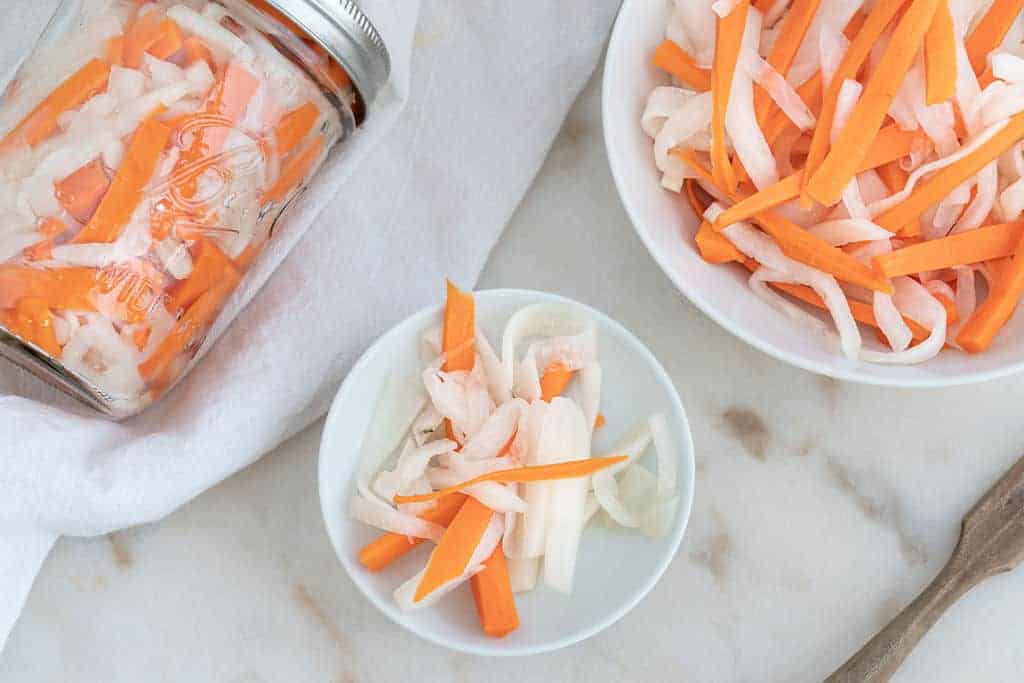
How to Store Cut Carrots
- In water: This method is best for carrot sticks and larger carrot pieces. First, fill a container (we like to use a large mason jar) with fresh, filtered water. Then submerge the carrots beneath the water and close the lid. Store in the fridge, changing the water every day for up to a week.
- With damp towels/cloth: Wrap the chopped carrots (no matter how they’re chopped) in damp paper towels (or a damp cloth) before placing them into a Stasher bag or airtight container. They should last 5-7 days. Alternatively, you could store them in a stasher bag with a teaspoon or so of water.
- Blanched: Blanching chopped carrots can help to double their shelf life. Do this method for carrot sticks and large slices, etc. Add the carrots to boiling water and cook for two minutes before transferring to an ice bath. Then store in an airtight container in the fridge for up to two weeks.
- Freeze them: You can dice/chop/shred the carrots and place them in a freezer bag. That way, they can be stored for 2-3 months and added to dishes from frozen. If you blanch the carrots first, they’ll last between 6-8 months in the freezer. Frozen carrots are best used within soups, stews, and other cooked dishes (no need to thaw first).
How to revive dry carrots?
Like the above storage methods, reviving dry carrots is all about introducing moisture back in to them.
- For chopped and baby carrots, submerge them in fresh, cold, filtered water.
- For whole carrots, you can submerge them in water too; however, you could alternatively fill a large mason jar with several inches of cold, filtered water (enough to cover all but about an inch of the carrots) and place the carrots in.
The amount of time it takes to rehydrate the carrots will depend on their beginning state. It can take as little as 5 minutes or even overnight. Once rehydrated, you can remove the carrots from the water, pat them dry, and store them in a bag in the fridge.
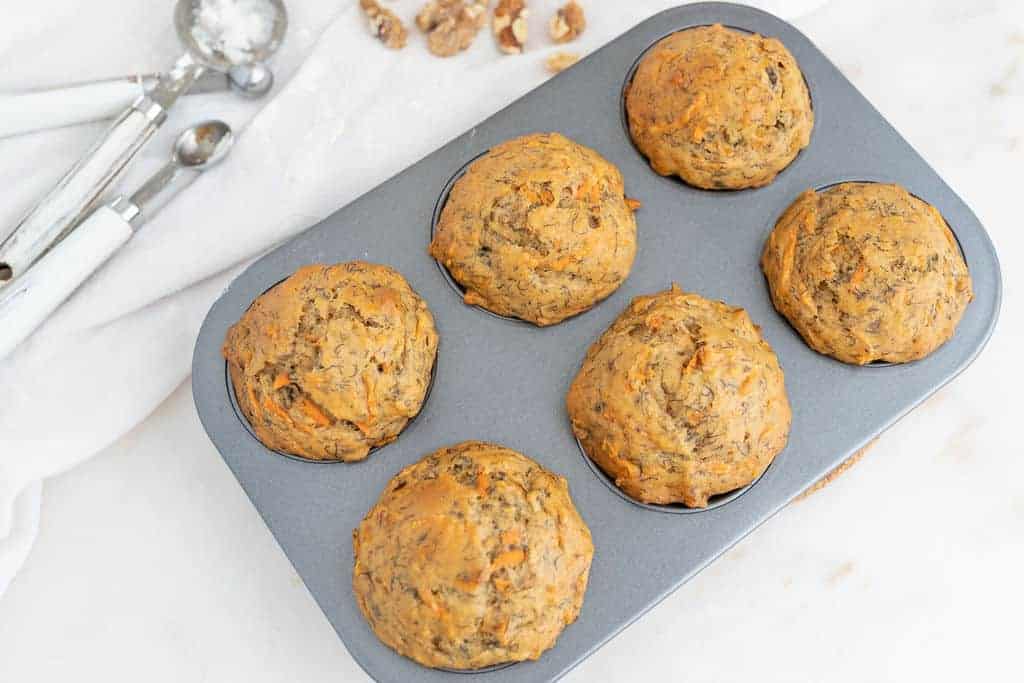
How to Use Carrots?
To say that that the options for enjoying carrots are practically endless would be an understatement. You can enjoy carrots raw, cooked, juiced, dehydrated, etc. Here are just a few easy carrot recipes and uses that we love!
- Use as a crudites for dips like hummus
- Julienne, grate, or ribbon into salads like leafy green salads, Fresh Crunchy Salad with Peanut Dressing, or the perfect pasta salad
- Make into Japanese Carrot-Ginger Salad Dressing
- Turn into a simple slaw or rainbow coleslaw salad with avocado mayo
- Add to soups and stews – like Spicy Carrot Soup, Matzo Ball Soup, Hearty Kale and Bean Soup, and Jackfruit “Chicken” Noodle Soup.
- OR use to create a mirepoix (a base for soups and stews)
- Add to carrot cake – or even these carrot cake muffins or carrot cake oats
- Use in curries – like yellow tofu curry or Roasted Carrot Curry Noodle Soup
- Turn into carrot juice or add to smoothies
- Blend into sauces – like Nacho Cheese
- Bake into Carrot Fries
- Cook and serve as a simple side dish – like these Glazed Carrots
- Add to pasta and grain dishes – like this Black Bean and Onion Pilaf, Easy Sweet Potato Lasagna, and Carrot Pad See Ew
More Vegan Carrot Recipes
- Pickled Carrots & Daikon Radish (Do Chua)
- Veggie-packed Potato Leek Soup
- Mushroom Stuffing
- One-Pot Pumpkin Chili
- Chickpea Quinoa Burgers
- Bite-Sized Veggie Rollups
- Bánh Mì Chay
- Crispy Tofu & Rainbow Veg Sushi
- Hearty Lentil Bolognese
You might also like to browse through our entire collection of plant-based carrot recipes!



